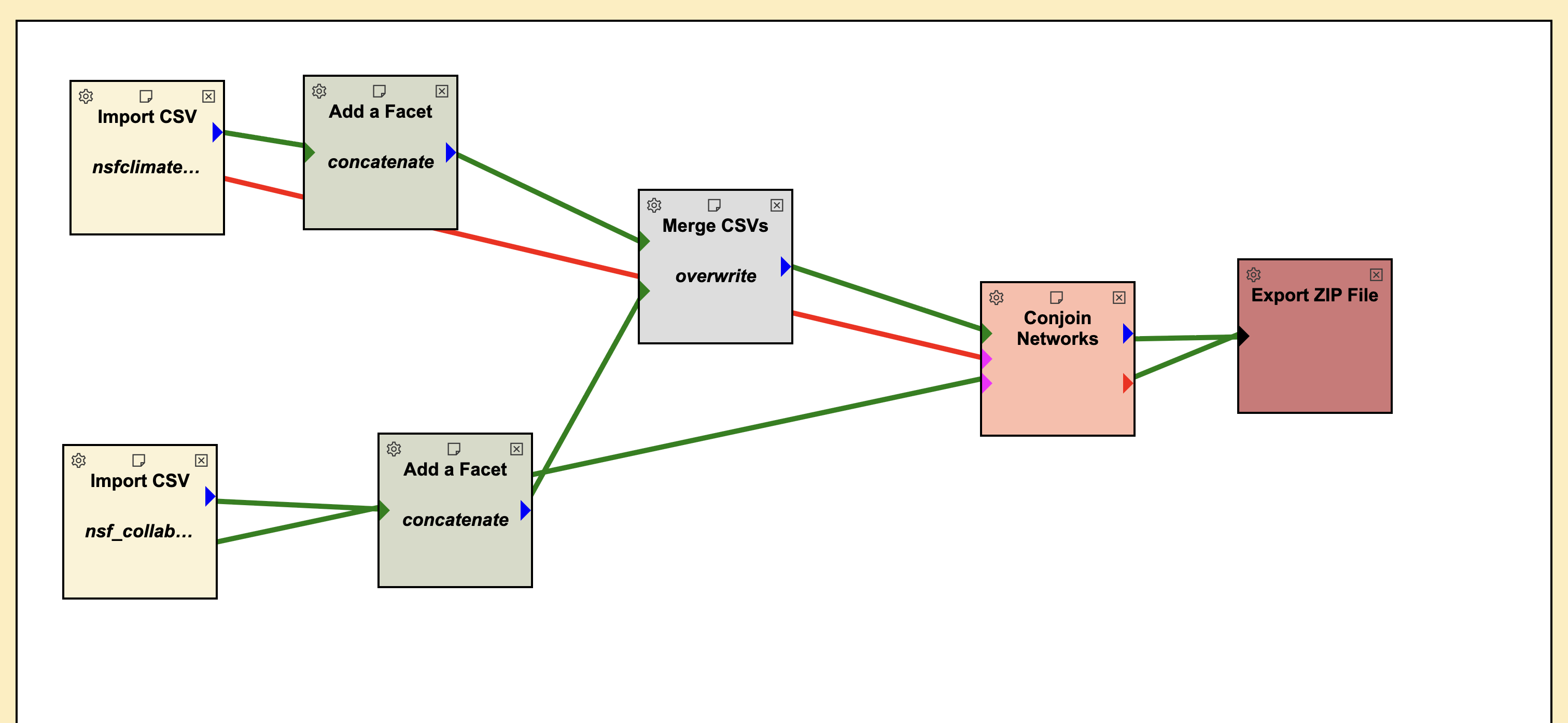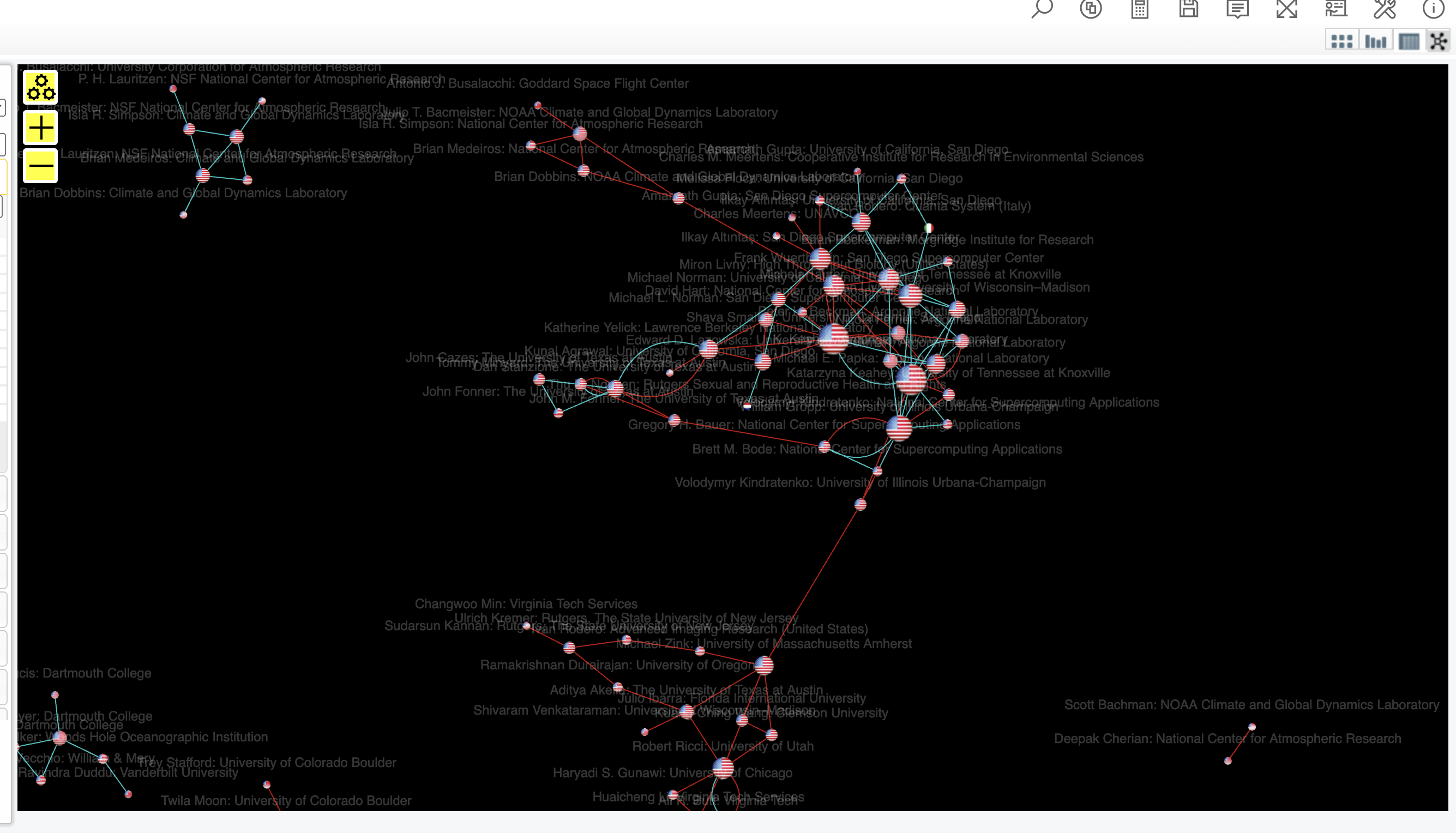This guide explains how to process and combine two CSV files (nsf_collaboration.csv and nsfclimateworkshop.csv) using the Conjoin Networks workflow in SuAVE. 
Example Input CSVs
Collaboration CSV (nsf_collaboration.csv)
Name,OAID,Affiliation,Country,City,Number of Collaborators in Scope,Collaborators in Scope
Aditya Akella,https://openalex.org/A5035329776,The University of Texas at Austin,United States,Austin,4,"A5085746671|A5082710354"
Alfred Anderson,https://openalex.org/A5040069168,The Ohio State University at Lima,United States,Lima,0,
Climate Workshop CSV (nsfclimateworkshop.csv)
Name,OAID,Affiliation,Country,City,OA Concepts
Aditya Akella,https://openalex.org/A5035329776,The University of Texas at Austin,United States,Austin,"Distributed computing|Network routing|Machine learning"
Alfred Anderson,https://openalex.org/A5011242504,University of Chicago,United States,Chicago,"Geology|Volcanology|Chemistry"
Step 1. Import CSVs
- Import both
nsf_collaboration.csvandnsfclimateworkshop.csv.
Step 2. Add Facets
Create extra combined fields to simplify later analysis.
- Collab Info:
Name + Number of Collaborators in Scope- Example:
Aditya Akella 4
- Example:
- Author Info:
Name + Affiliation + Country- Example:
Aditya Akella The University of Texas at Austin United States
- Example:
Step 3. Merge CSVs
- Merge key:
OAID(the unique author ID) - Handle duplicates: Overwrite (workshop data replaces collaboration where overlapping)
Result (merged CSV):
Name,OAID,Affiliation,Country,City,Number of Collaborators in Scope,Collaborators in Scope,OA Concepts
Aditya Akella,https://openalex.org/A5035329776,The University of Texas at Austin,United States,Austin,4,"A5085746671|A5082710354","Distributed computing|Network routing|Machine learning"
Alfred Anderson,https://openalex.org/A5040069168,The Ohio State University at Lima,United States,Lima,0,,
Alfred Anderson,https://openalex.org/A5011242504,University of Chicago,United States,Chicago,,,"Geology|Volcanology|Chemistry"
Step 4. Edit Facets
Remove extra or hidden fields you don’t need:
Latitude,Longitude#img,#netvisShow Publications in Scope
Keep only the clean fields you want in the final dataset.
Step 5. Conjoin Networks
- Input the merged CSV plus the two JSON networks:
- Author ↔ Collaborators (from collaboration data)
- Author ↔ Concepts (from workshop data)
The Conjoin Networks block unifies them:
- Nodes = Authors
- Links = Collaborators + Concepts
- Attributes = Affiliation, Country, Publications, etc.
ASCII-style example network:
Aditya Akella
├── Collaborates with → A5085746671
├── Collaborates with → A5082710354
├── Works on → Distributed computing
├── Works on → Network routing
└── Works on → Machine learning
Step 6. Export ZIP File
- Export the result as
nsf_conjoined.zip. - Upload this ZIP into SuAVE Survey to view the integrated network.
✅ Final Output
When uploaded into SuAVE, the result is an interactive network visualization where:
- Authors are connected to collaborators and concepts.
- Each node can be explored by clicking to see its attributes.
